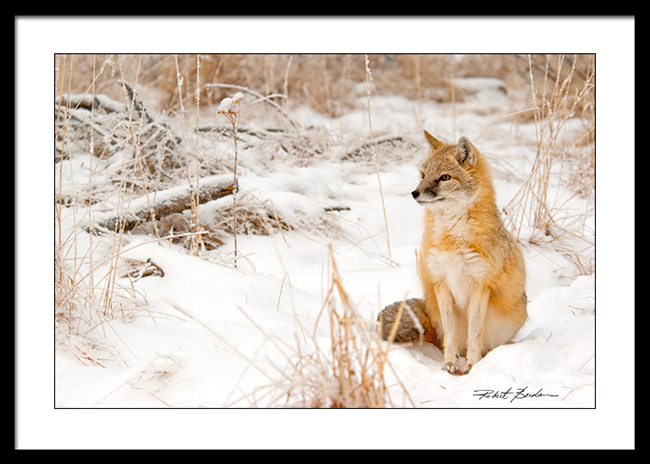
Photographing Foxes - The Trick is Finding Them
By Dr. Robert Berdan
January 16, 2013
Red Fox (Vulpes vulpes) posing next to my campground at Prelude Territorial Park in the North West Territories, 2012. Canon 5D Mark II and 70-200 mm F4 lens.
The hardest part of photographing a fox is finding one. The surprising fact is that the fox is the most widespread mammal in the world after human beings, yet few of us ever have a chance to even see one. In part, this is because the animals are largely nocturnal though they can be found during the day. The best chance to see and photograph one is probably in winter where they are easy to spot against the white snow and they often hunt for voles and other small rodents hiding under the snow. My first photo of a fox was north of Calgary on a farm road. As soon as the fox spotted me and my car beside the road he took off like a rocket and all I got was his hind end (top banner). That was 10 years ago. Lucky for me I have had many opportunities to photograph foxes since then and below are some of my favorite photos.
I have always been interested in foxes, perhaps because of their reputation for being cunning, intelligent, attractive and noble animals. They have an undeniable cuteness. The animals are for the most part elusive and most of my encounters with them were usually brief and depended a certain amount on luck. One location where I photographed as many as three or four different foxes is Prelude Territorial Park in the North West Territories. My first encounter occurred a few years back in my campground. It was dusk and a red fox came through my camp scavenging for leftovers and walked right by me. The frustrating thing was that is was so dark I could not focus on the animal and my attempts to use a flash were futile. The good thing is this fox came back each morning and evening, and the next time I was ready. One time I was sleeping in the tent and I heard something outside the tent scratching away, I got up to look out and at the same time the fox came around to look in and I scared the wits out of him. I don't look my best first thing in the morning. Still he returned later that evening before it got dark and I had my camera ready.
Red Fox that came to visit my camp and search for any leftovers. I watched him systematically check under, on and around the picnic table before moving on to the next campground.
Last Fall I visited the Prelude campground again with friend Hälle Flygare. I usually drive from Calgary to Yellowknife in September in order to run a photo workshop in conjunction with Peterson's Point Lake Lodge. I like to arrive about a week early in order to photograph the Aurora in the evening and also any wildlife I might encounter such as foxes, bears, moose, beaver and lynx. This year on our first night we had a visit from a Red Fox in the evening and again in the morning. This time we had three different foxes visit us. These foxes did not like to share and would show some aggression towards each other, but it was a real treat for us as waited for them to drop by and we took thousands of pictures. Sometimes they would chase the local birds and squirrels and one of them found a small mouse near our campground and quickly eat him for supper.
Early morning light, another fox is in the background and out of focus waiting his turn to visit our campground.
For us, having the foxes visit us regularly was like getting a treat everyday. One night we even had him follow us as we set up on the Rocks overlooking the lake in order to photograph the Aurora under a full moon (see below). To see my aurora photographs in the Park visit this page.
Red Fox under moonlight over looking Prelude Lake in Prelude Territorial Park, September 2012. This location is ideal for photographing the Aurora and is also the best place I have ever encountered for photographing foxes.
Red Fox sits in the background of this portrait of fellow wildlife photographer Hälle Flygare. The foxes would come within a few feet of us which allowed us to photograph them up close.
In some instances the foxes were down right bold and would climb up on our picnic table and steal our food if it was not
completely enclosed. One night I woke up and found one of the foxes trying to drag my lunch box away. I keep a pretty tidy campground as I don't want to attract bears, but these bold foxes would come in even while we were eating.
Hälle Flygare sitting down to get a low angle shot of the fox.
What makes for a good fox shot? First of all good light, second is unusual behavior such as the animal running, or interacting with other animals. The eyes of a fox are also interesting, they have "cat eyes" with vertical pupils which allow them see better at night. Also with such cooperative animals I tried hard to find attractive backgrounds and I also tried to get low to the ground - sometimes lying down on my stomach so I could photograph them at their level. .
Above one of the Red foxes reacts to another fox moving into his territory and he ended up chasing the other fox away temporarily. Prelude Territorial Park in morning light. Canon 5D Mark II with 70-200 mm F4 lens.
Fox on the move in early morning light in Prelude Territorial Park, Northwest Territories, September 2012.
Red fox in early morning light near our camp in Prelude Territorial park.
Red fox approaching our camp site, Prelude Territorial Park. NWT
Red Fox in early morning light. 300 mm f/2.8 lens.
Red Fox yawning as we watched us from about 15 feet way in our campground - Prelude Territorial Park.
Red Fox early morning light near our camp. 300 mm F2.8 lens, Nikon D800 camera.
Red fox running in Prelude Territorial park in soft overcast light. 300 mm f/2.8 lens Nikon D300 camera.
Red fox on smooth granite rock in Prelude Territorial Park, NWT
Red Fox approaching our campground.
Low angle shot of Red Fox coming through the underbrush.
I followed this fox into the forest where he stopped to contemplate.
Red fox near Jack Pine trees Prelude Territorial Park, NWT
Red Fox in late evening light Prelude Territorial Park.
We hiked around the park and found several fox dens though we weren't sure if they were still being used. Certainly close encounters with wildlife such as what we had are rare, though I am certain if you visited this campground and stayed a few days you would likely have a similar encounter. Most of my encounters with foxes have been brief. Along the Ingraham drive outside of Yellowknife, I also encountered a variation of the Red Fox called a cross fox. I have seen and photographed a few of them and although they weren't as bold as the Red foxes, they were curious and would sometimes approach within 20-30 feet from us.
Cross fox has a variable fur coat color that can be a mix of black and orange or even dark gray colour. This fox was photographed near a mining museum outside Yellowknife. The cross fox was not afraid and sat and posed for us.
Cross fox out side Yellowknife near one of the mines. I frequently saw cross foxes along the road side while driving to and from Prelude Park, though they were more commonly seen in the evening. 300 mm F2.8 lens and Nikon D300.
While Foxes are found through most parts of North America you are most likely to encounter them in rural and agricultural landscapes. The will create dens on abandoned buildings, underneath silos and in fact like to den near farm houses as protection from coyotes. These animals rid the fields of rodents and are generally beneficial unless of course the farmer has chickens.
Typical country where you could expect to find a fox. This scene is from north of Calgary. The main challenge is finding the foxes and frankly its not easy. A couple of years ago I was driving to Red Deer and back to Calgary each day in order to teach. One morning, out of the corner of my eye, I saw 4 baby foxes playing - I quickly pulled over as they were only about 20 feet from the road, grabbed my camera and to my surprise the baby foxes ran over to me as I stood next to the fence. My first thought was - you stupid little foxes, if I was a predator you would be eaten. I took some photos and after this stopped each morning and evening to photograph the babies. I also contacted the farmer and asked permission to photograph them and provided him with a 10 x 15 inch print of the baby foxes. Finding these babies so close to the road was in part luck, but also I had my camera on the front seat of my Jeep and I was looking for any wildlife opportunity that I might come across.
Baby foxes playing in soft overcast light. 300 mm f2.8 lens, Nikon D300
I photographed the baby foxes early one Saturday morning near Airdrie, Alberta. I would set up a small blind or hide behind a wooden shed. The babies often knew I was there but did not see me as a threat, Mom on the other hand as soon as she would return from hunting and detect me would yelp and all the babies would dive down into their den. I could watch them play for hours. (You can see a short video about the baby foxes on my video page).
Baby foxes playing outside the den near Airdrie, Alberta.
One of the baby foxes was limping and appeared to have hurt one of his hind legs and I wondered if he might survive into adulthood. I watched the babies over a period of about 6 weeks groow and finally leave their den.
On returning one of the adult foxes would often yelp and the babies would quickly dive down into the den.
Cochrane Ecological Institute breeds Swift Foxes for release into the wild.
Northwest of Calgary I often drive along Horse Creek Canyon road and then down Grande Valley Road and back to Calgary. Along this route I have seen foxes on several occasions. Along township road 272 near the junction with Grande Valley road is a wildlife sanctuary called Cochrane Ecological Institute owned and operated by Clio Smeeton. The reserve rehabilitates injured animals and also operates a breeding program for Swift Foxes (Vulpes velox). The Swift fox is an endangered species with less than 200 animals living in the southwestern corner of Alberta and a few near Grasslands national Park in Saskatchewan. The animals have a high mortality rate their main predator being the coyote. Clio and her volunteers breed and conduct research on Swift foxes and then release them into the wild. I was graciously given permission to photograph the foxes and in exchange I provided them with a web site, DVD with many of my photographs and several prints. Many of the foxes run "wild" in the compound though they are fenced in. Foxes, however can dig and I had seen several of them outside the fence. I had the privilege of visiting and taking pictures on several occasions and below are a few of my favorites. The animals were free to roam the compound, but technically are not wild animals - I like to refer to this as controlled situations. I visited the facilities in 2003-2004 during various seasons in order to capture images of the babies and adults in different seasons. I have searched for swift foxes in Southern Alberta, but so far have not had any luck finding them.
Swift fox at Cochrane Ecological reserve was aware of my presence, but allowed me to approach within about 20 feet. 300 mm f/2.8 lens and Nikon D2X camera. The distinguishing features of the swift fox are black patches on either side of the snout and a black tip on its tail. The swift fox is also smaller then the Red Fox.
Swift fox in winter - I was about 30 feet away and laying down in the snow to take this photo with my 300 mm f/2.8 lens.
A swift fox mugs hot. This close-up image of the fox’s face allows you to admire it's pointy ears, black patches on the side of the nose and see the facial resemblance to a cat.
Adult swift fox in early Summer - some of the fur is starting to shed.
Swift fox kit and mother at the Cochrane Ecological Reserve
Young Swift fox kit.
Swift fox and kit. 300 mm f/2.8 lens and Nikon D2X.
Photographing foxes usually requires a telephoto lens such as a 70-200, 300 or longer focal length lens. Usually have your lens set to its widest aperture, the ISO speed depends on the lighting conditions. If it's starting to get dark try ISO 1600. My favorite time of day is the morning, there is usually lots of light and it's getting brighter so I will set my camera ISO speed to 200-400. I almost always have the lens set to its widest aperture so I can get a fast shutter speed. Most of the time I shooting with the camera and lens hand held so I can move quickly, If you are using a longer lens e.g. 500 mm F4 then a tripod maybe essential. A blind can also be helpful, though National Parks do not allow them. You can also simply use natural cover to hide from the foxes and keep downwind. Often the animals know you are there, but if they don't feel threatened may allow you photograph them in close proximity especially where they have been habituated to people like Prelude Territorial park.
Arctic fox (Alopex lagopus) photographed near Pond Inlet on Baffin Island - this curious animal would come in close to workers. Taken with a compact Olympus digital camera.
Arctic foxes live north of the treeline though a few foxes have been found to enter the north east corner of Alberta. They often survive on small rodents such as lemmings. insects, young hares and on left overs from wolf and polar bear kills. Some are believed to follow the caribou south in the Fall and then north again in Spring. These cat size animals turn white in winter and brown-gray colour in summer. The above fox photograph was taken by my nephew who was working near Pond Inlet. These curious foxes would come right into camp within a few feet of the workers. I am still hoping to encounter these beautiful animals on one of my future trips to the arctic. The biggest challenge photographing foxes is finding them. The photographs in this article were taken over the period of a decade - some years I don't find any foxes. If you do find some that are cooperative enough to let you photograph them, consider yourself lucky and if you can't find any, try your local zoo.
Tips for Finding Foxes
- Go for hike or drive in the country early or late in the day and bring binoculars
- Let people you know who live in the country know that you are looking for foxes
- Learn as much as you can about fox biology and their distrubution in your area
- Contact biology or wildlife experts in your area to see if they might know
- In winter, foxes may be easier to spot if there is snow on the ground
- Visit a Park where foxes are known to be common e.g. Prelude Territorial Park or Yellowstone
- Check if they have foxes in a zoo near you.
- Volunteer to help at an animal rehabilitation center near you - they may have some injured foxes
- Ask a wildlife photographer, some might tell you, others might be afraid that you could take a better picture!
- If you live in Calgary, any farm road north of the city or heading into the foothills seems good
If the foxes are far away sometimes all you can do is watch them, then return and try again.I believe luck plays an important part in our lives, but the more you look the greater your chances will become. It took me a decade to take these pictures and I am still hoping to one day to photograph an arctic fox in its natural habitat, even if I don't get a picture of one just seeing a fox in the wild is a thrill.
Note if you would like to hang any of these pictures in your wall you can order the digital files signed and have hem printed and framed. A 10 x 15 inch 300 dpi digital file can be e-mailed to you for only $50 + GST - 10 x 15 inch custom prints are also available for pick up in Calgary for $150 each. RB
Framed print of Swift Fox (Vulpes velox) .

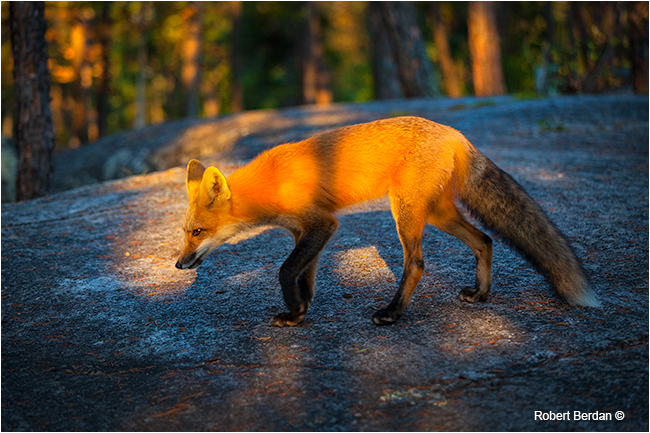
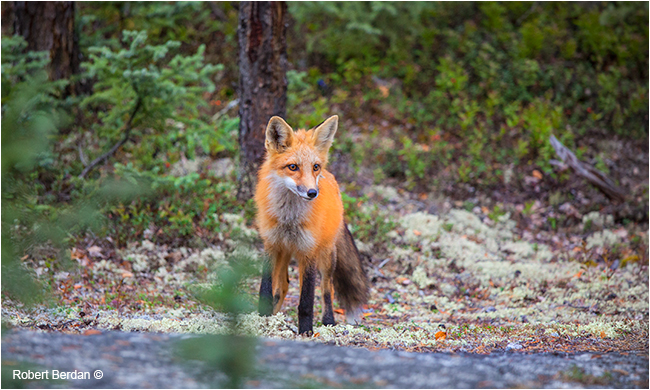
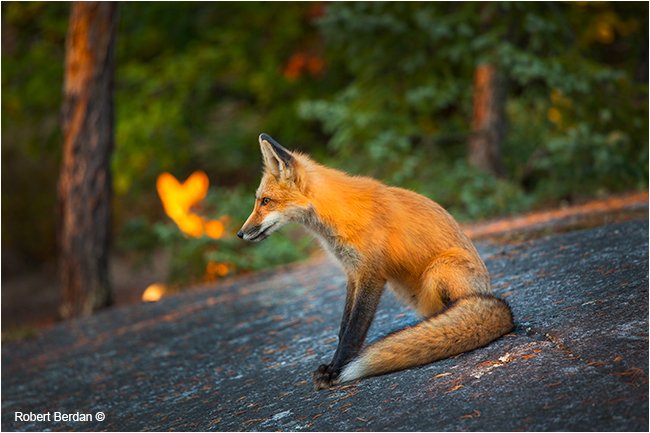
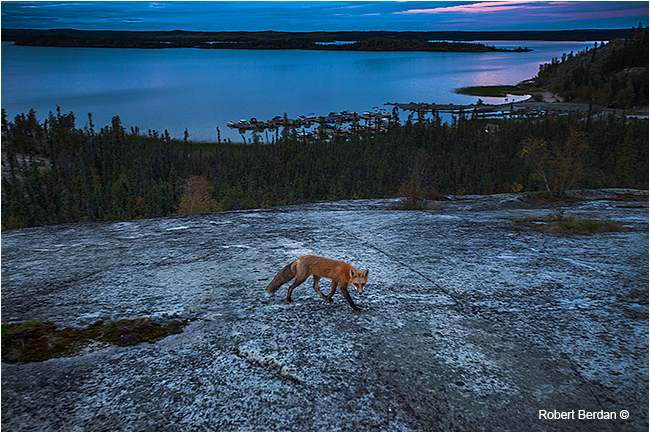
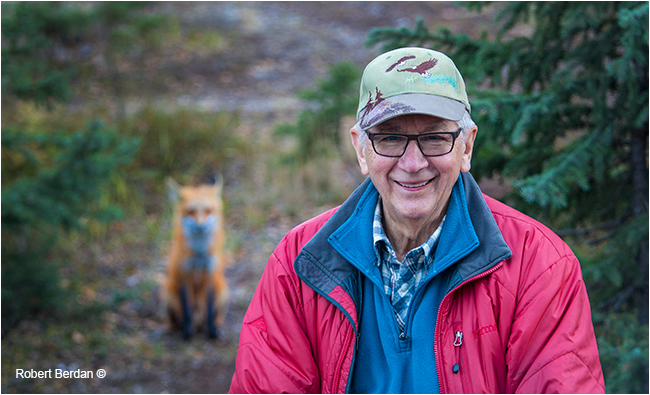



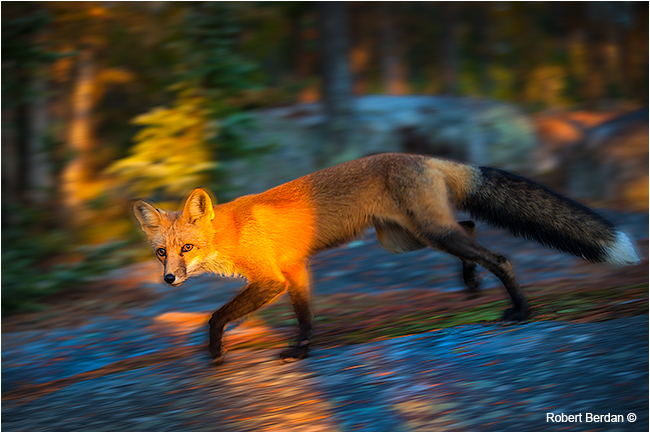
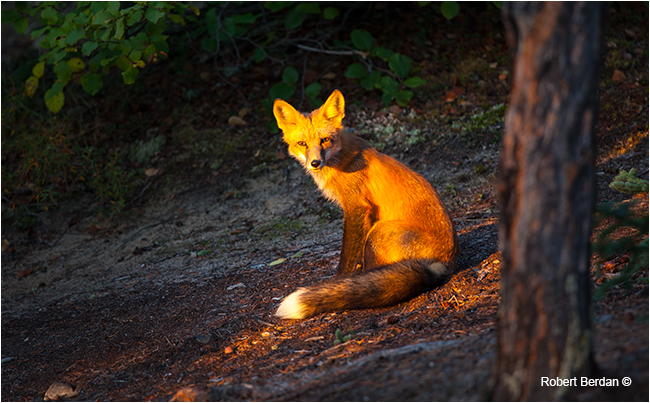
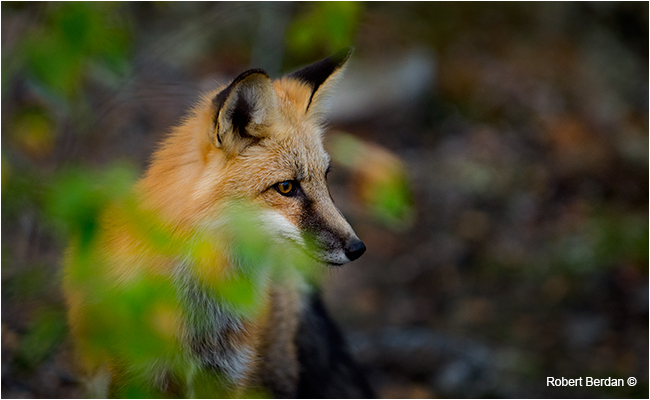




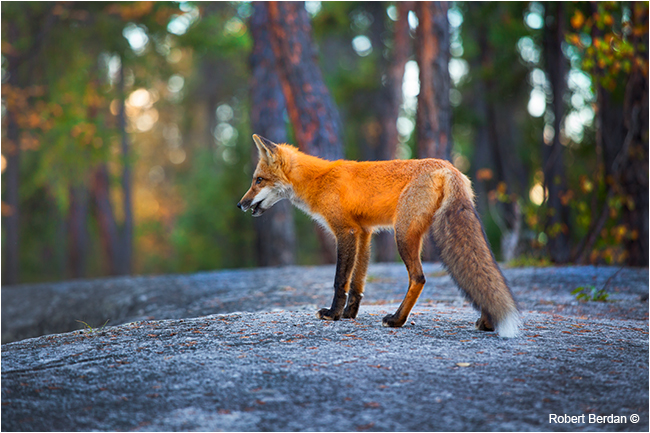

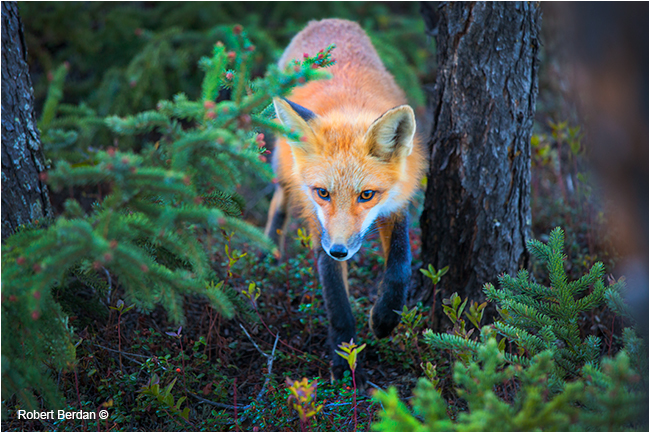


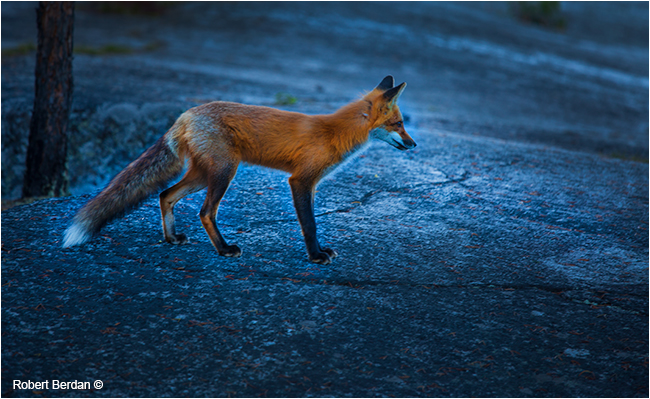
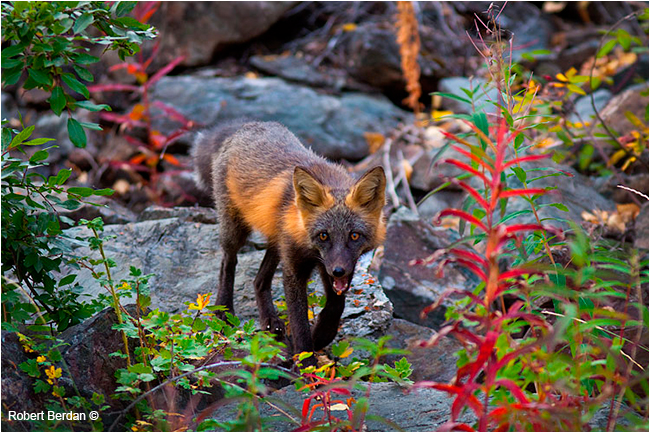




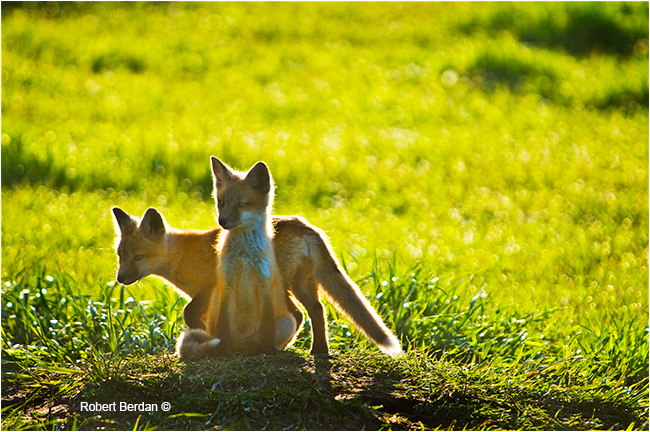
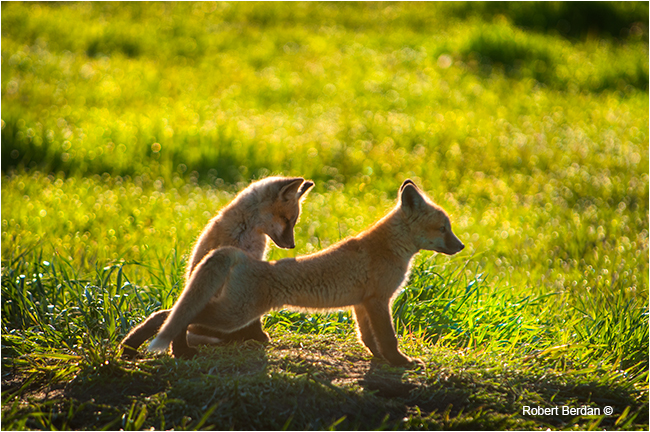
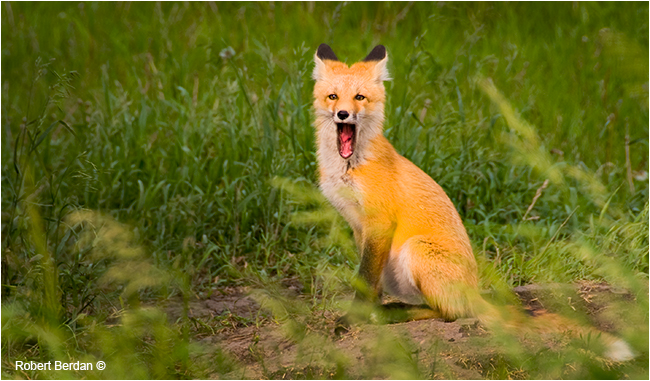





foxandkit_DSC_0067.jpg)

